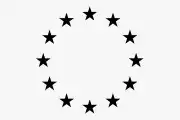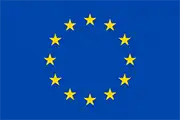Rydde App
Rydde is the place where you can submit your world cleanup action, join existing actions or "adopt" a piece of Norway.
Challenge
The problem of littered beaches is of global proportions. Almost every country has to organize a coastal cleanup. Norway, associated with cleanliness and orderliness, is not spared from this unpleasant topic. Irresponsible people throw it into the sea, where the waste poisons the water and then ends up on the coasts. Garbage is also left by beach goers. Every year thousands of volunteers take part in cleaning up the Norwegian coastline. How did the Norwegians solve the problem of the littered coastline? With the help of technology and people for whom the good of the planet and their immediate environment is important.
The aim of the project was to prepare a mobile application and a website, thanks to which it is possible to quickly organize cleanup activities on beaches. Rydde is a place where you can register your clean up action, join existing actions or "adopt" a piece of Norway. The app allows you to carefully analyze the data provided, broken down by county, municipality, or even the type of trash found. The software we have created solves the problem of difficulties in organizing joint cleaning actions. The application builds a community around a common goal, which is a clean, litter-free environment. Users have been given a tool that allows them to connect with like-minded people, allows them to find places where they can get cleaning equipment for free, and even allows them to apply for reimbursement.
With our solution, analysts and researchers get data to analyze, draw conclusions and implement solutions. Although Norway is already considered one of the cleanest countries in the world anyway, they implemented a solution to make the country even cleaner.
Solution
We created an application where the user can:
- plan and record cleanup actions directly on the map, both private and public,
- invite friends to join clean up actions,
- communicate and arrange with others to clean up actions,
- publish photos from the campaign,
- search for a place to receive free cleaning equipment,
- request reimbursement for cleanup costs,
- can "adopt" a piece of Norway,
- record the amount of garbage collected in the app (data is passed on to scientists),
- provide reports of trash found that has not been removed or needs to be cleaned up by professional entities with appropriate equipment (large objects, boat wrecks, hazardous substances),
- retrieve data from previous operations,
- view statistics on waste collected in recent years,
- search for cleanup sites in your area,
- join an existing cleanup action.
During the implementation of the work we encountered a number of challenges. At the initial stage of so-called discovery it was particularly important to organize the vision of the application presented to us. Our experience shows that this is the most important phase in the project, which has a decisive impact on its proper implementation. During a series of workshops we defined the final shape of functionality in response to the previously defined business needs of the client. First of all, we made sure that they were understandable for all project stakeholders, so that both we and the client knew what we would get at the end.
Another particularly important element was the look of the application. The client wanted the look of the application to reflect the unique nature of the action. Having such an assumption in mind, we made sure that the design of the application put the appearance and functionality on equal footing. We also made sure that the mobile application is easy to use in various conditions, taking into account that most of it will be used in difficult terrain. During the design process we took into account the issue of a wide audience of the application, with different ages and levels of technological knowledge. We wanted everyone using Rydde to be able to work with it without any problems. During the workshops we managed to create a design for a mobile and web application that met all these assumptions and at the same time perfectly fit into the visual identity of our client.
After the implementation, we expected a large number of users due to the planned marketing campaign, social actions, as well as the interest of journalists. We knew that the system had to be ready to accept many requests from volunteers and NGOs. Therefore, the stability of the system, its reliability, and a stable, scalable server infrastructure were of paramount importance to deliver the product as intended. The infrastructure we created protected both applications from user traffic peaks, which appeared both at the very beginning right after implementation and later on.
We can divide the entire work performed into three stages:
- Workshops: Before starting the project, we conducted a workshop in which we created a list of functional requirements (FRD), in response to business requirements (BRD). At this stage, we also defined the scope of the system architecture (TRD). In this way, we aligned the scope of requirements with the client's needs. We better understood the objectives and found a way to achieve them.
- Development Phase: The UX design and the underlying graphic design of the application correspond to the client's visual identity. We took care of the legibility of the content in the application.
- Implementation and integration with the client's systems: Thanks to the analysis during the workshop, we got to know the details of the systems used by the client. A detailed description of the application's architecture helped us to efficiently implement and integrate it with systems outside the product.
In this project we prepared a browser version and mobile applications for Android and iOS devices. The project was carried out in SCRUM methodology, thanks to which emerging changes and new ideas were quickly implemented. Work was divided into 2-week sprints. After all the tests, the application was added to the Google Play and Apple App Stores. At the end of each sprint work was done and needed changes were discussed. The project team consisted of: project manager, android developer, iOS developer, frontend developer and tester.
We completed the project in:
- React,
- Kotlin,
- Swift,
- OpenStreetMaps.
Effects
With the help of Rydde, more than 4,250 clean-up actions were performed across Norway in 2020 (an average of 11 per day). Through the actions, organized with the help of the app, participants cleaned more than 9500 km of beaches and collected more than 1800 tons of trash. More than 38 thousand volunteers joined the clean-up actions, with less than 5.5 million inhabitants. The app allows you to carefully analyze the data provided by county, municipality, or even the type of trash found.
As it was: Previously, each resident cleaned up their surroundings on their own. The local community was dispersed and did not organize into groups. Researchers did not have a data set related to the type of trash and where it occurred. Broken boats, hazardous waste, or dead animals were reported to local authorities to a limited extent. Litter lying on the coast included abandoned ropes and nets that posed a danger to people and animals. It's also tons of plastic, broken toys and discarded clothing.
What it is: With the app, the local community creates cleanup events. Users communicate with each other in our tool and set common action dates. Currently (04.2021) cleanup actions are scheduled up to half a year ahead. This year alone (04.2021), more than 850 cleanup actions took place, during which more than 4,000 volunteers collected 145 tons of trash and cleaned nearly 1,000 km of coastline.
They were committed and dedicated to the project.
See more
Radio 357
See world-class radio, created by a crew of legendary radio personalities with our participation.
Simple.pl - Business Finance App
Creation of an innovative platform, Simple.pl – effective credit check for entrepreneurs
Innogy
An application that enables electronic meter reading without replacing it with an IoT model.


